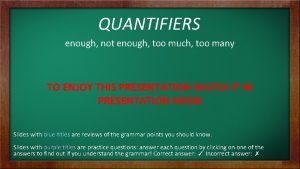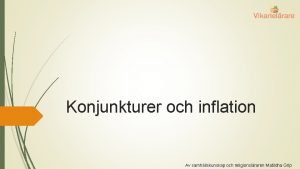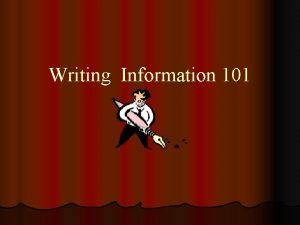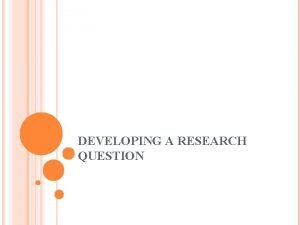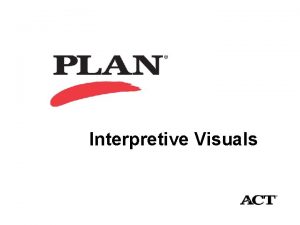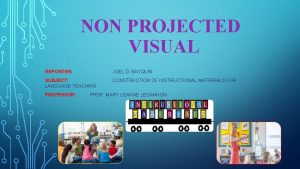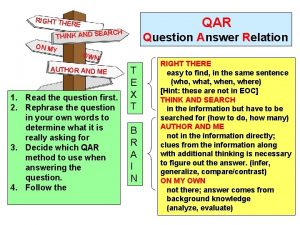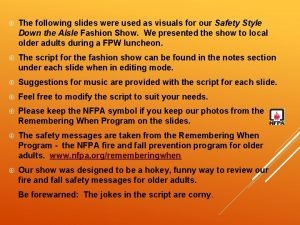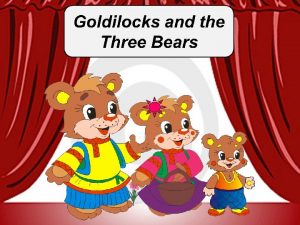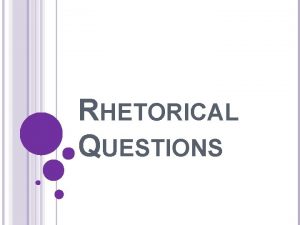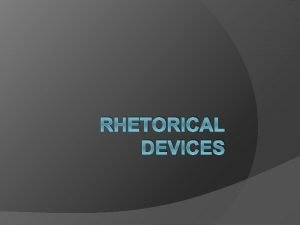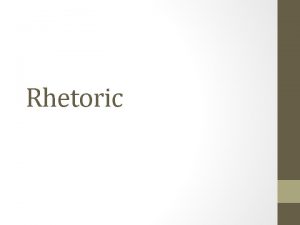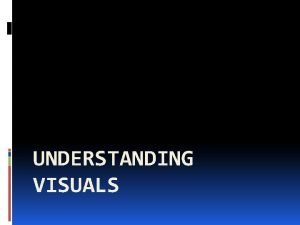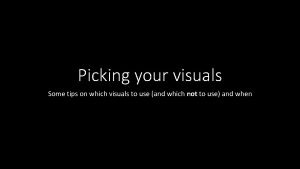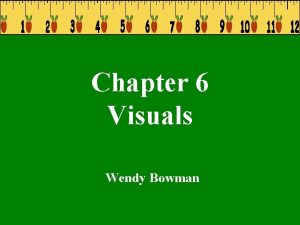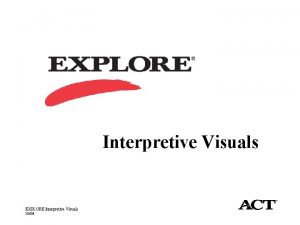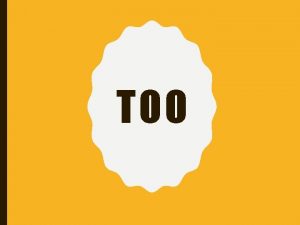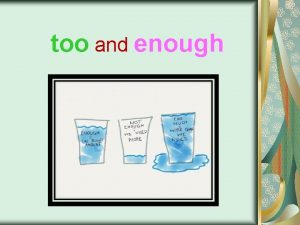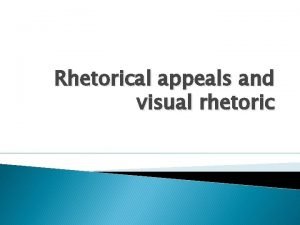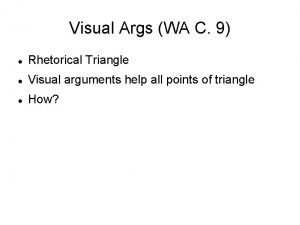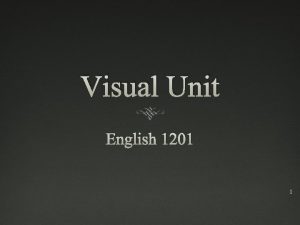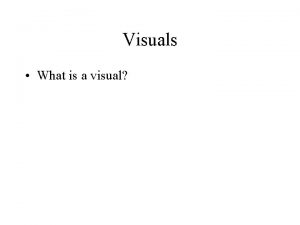Visual Perspective Visuals are Rhetorical Too What kind


























- Slides: 26

Visual Perspective

Visuals are Rhetorical, Too • What kind of arguments are being made here about how things are and ought to be?



Visual Perspective 1. Visual art aesthetics: creating and appreciating art 2. Visual communication: studies how images convey meaning 3. Visual literacy: skills for effectively finding, interpreting, evaluating, using, and creating images 4. Visual culture: the many ways visuals are embedded in everyday life 5. Visual rhetoric: how visuals reinforce or challenge ideology

Visuals in Everyday Life • What are some visuals that have affected the way you look at yourself and the world?



Terms • Pictograms • Ideograms

Gestalt Theory • General idea: our brains group individual items together based on what seems to go together and what doesn’t.

Gestalt Theory Laws 1. Similarity: similar-looking things go together 2. Proximity: things close together go together 3. Common Fate: items moving along the same path at a similar speed go together 4. Closure: we perceive incomplete letters, pictures, and shapes as whole 5. Continuity: we “connect the dots” so to speak, perceiving connected or continuous figures rather than separate ones.

Gestalt Image • https: //psychlopedia. wikispaces. com/Gestalt+ Laws+of+Perceptual+Grouping


What gestalt laws are at work here?

Semiotics 1. Semiotics: study of signs 2. Syntagmatic: meaning gained from signs surrounding them in space or time 3. Paradigmatic: gain meaning as they fit or contrast with other signs 4. Metonymic: a sign associated with something else (“The White House” for government) 5. Synecdoche: similar to metonymy, but the word is actually part of the other thing (“Send the hands below deck” for sailors)


Visual Pleasure Theory • Visual images in media ask viewers to admire female images via a male gaze (Laura Mulvey) – Male gaze: way in which viewers (of all genders) look at the people presented and represented in visuals by identifying with the male actor(s); visual arts are structured around a male viewer – This (allegedly) influences our subconscious beliefs about our own psyches

Psychoanalytical Terms (Lacan) • Mirror stage • Self-image • Scopophelia: love of looking – Fetishism: desire to look at something or someone as an object – Narcissism: self-love; identifying with characters – Voyeurism: desire to covertly watch people do private things


“What we confront here is the fundamental ambiguity of the notion of fantasy: while fantasy is the screen which protects us from the encounter with the Real, fantasy itself, at its most fundamental – what Freud called the “fundamental fantasy, ” which provides the most elementary coordinates of the subject’s capacity to desire – cannot ever be subjectivized, and has to remain repressed in order to be operative” (Zizek).

Steps to analysis • Look for something with a strong visual element (rather than audio or speech), especially cases where the visuals contrast with the verbal messages. • Describe images in terms of fetish, voyeurism, narcissism • Evaluate potential implications

Watching a show with the sound off • See questions on page 229 • TS-19 (13: 52) • https: //www. netflix. com/watch/70210892? tr ack. Id=14170289&tctx=0%2 C 5%2 C 41063934 d 7 b 0 -4722 -9 bf 6 -a 304 bf 86 e 841 -65208419

TS-19 1/3 • The episode opens with a flashback. Shane tries to carry out Rick, then seems to think he’s died. He sees soldiers killing frantic people and barely evades them. He blocks the room and leaves. • What is the purpose of this scene from a narrative perspective? Why put it here?

TS-19 2/3 • Shane gets drunk and confronts, then assaults Lori. Later, Rick buys his story that he scratched himself in his sleep, and assumes that Lori’s tears are about fear of the zombies. • What is all this saying about the characters involved? Feminism?

TS-19 3/3 • Dr. Jenner informs them about what he’s learned about the infection, and assumes that there’s no cure; civilization is over. – On the plus side, they can all die quickly and painlessly as the building self-destructs. There’s also the famous whisper to Rick. • How could you analyze Jenner’s motives? Consider that his wife was the best scientist in the world; she made him promise to keep going. – Would you stay or go?

Now to Combine Music + Visual • 43: 10 • https: //www. netflix. com/watch/70210892? tr ack. Id=14170286&tctx=6%2 C 8%2 C 3 d 75945 ed 6 cc-4 a 15 -bccc-28 e 52 efb 53 cf-65014507
 Mikael ferm
Mikael ferm Kahoot quantifiers
Kahoot quantifiers Högkonjuktur inflation
Högkonjuktur inflation Too anointed to be disappointed meaning
Too anointed to be disappointed meaning Too broad and too narrow examples
Too broad and too narrow examples Too broad and too narrow examples
Too broad and too narrow examples Not too narrow not too deep
Not too narrow not too deep Just right scale
Just right scale Rational of the study
Rational of the study Too foreign for home too foreign for here
Too foreign for home too foreign for here Alachua visuals llc
Alachua visuals llc Power bi custom visuals development
Power bi custom visuals development Interpretive visuals
Interpretive visuals Power bi custom visuals development
Power bi custom visuals development Interpretive visuals
Interpretive visuals Non projected visuals
Non projected visuals Qar visuals
Qar visuals Use developer tools to create custom visuals power bi
Use developer tools to create custom visuals power bi Potty training underware
Potty training underware Qar visuals
Qar visuals As visuals
As visuals 1 point perspective house
1 point perspective house Silo perspective vs business process perspective
Silo perspective vs business process perspective Eglive
Eglive Contoh bahasa pemrograman konvensional
Contoh bahasa pemrograman konvensional Charlie and the chocolate factory chapter 14
Charlie and the chocolate factory chapter 14 Goldilocks and the three bears
Goldilocks and the three bears

